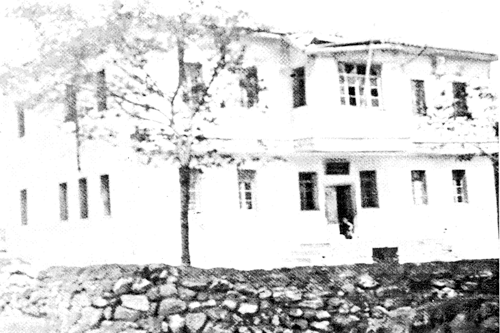|
The History of the Village of Perkenik (Pakradunik)
Fr. Ephrem Boghossian C. M. Vd (Mechitharist of Vienna, Austria)
Translation by Joe Topalian
|
|
|
|
|
TITLE PAGE, ENGLISH:
HISTORY OF THE ARMENIAN VILLAGE OF PERKENIK ("PAKRADUNIK"/"BAGRATUNIK")
Original Armenian By The Late Fr. Ephrem Boghosian Mechitharist of Vienna (1895-1972)
English Translation by Joe Topalian |
|
|
TABLE OF CONTENTS, ENGLISH
|
|
|
TRANSLATER'S PREFACE
|
|
|
INTRODUCTION, ENGLISH
|
|
|
CHAPTER 1, ENGLISH:
EARLIEST RECORDS OF THE NAME "PERKENIK"
(Armenian Manuscript Pagg 3 to 6) Partial Translation
|
|
|
CHAPTER 2, ENGLISH: THE POPULAR TRADITION
On the Origin of the
Village's Formal Name "PAKRADUNIK" ("BAGRATUNIK") (Armenian Manuscript Pages 7-10)
(To be Translated [JT])
|
|
|
CHAPTER 3, ENGLISH:
WHERE DID THE FIRST SETTLERS COME FROM AND HOW LONG AGO? (To be Translated [JT])
|
|
|
CHAPTER 4, ENGLISH:
THE TOPOGRAPHY OF PERKENIK Partial translation
|
|
|
CHAPTER 5, ENGLISH:
THE RELIGIOUS SHRINES OF PERKENIK (Complete translation [JT])
|
|
|
CHAPTER 6, ENGLISH:
THE CLIMATE AND PRODUCE (Complete translation. J.T.)
|
|
|
CHAPTER 7, ENGLISH:
THE POPULATION OF PERKENIK (Abridged Translation J.T.)
|
|
|
CHAPTER 8, ENGLISH:
PERKENIK THROUGH THE CENTURIES -
(AN HISTORIC PERSPECTIVE) To Be Translated
|
|
|
CHAPTER 9, ENGLISH:
PERKENIK'S ECONOMY To Be Translated
|
|
|
CHAPTER 10, ENGLISH:
PERKENIK'S FAMOUS WRESTLERS (Complete translation J.T.)
|
|
|
CHAPTER 11, ENGLISH : EDUCATIONAL FACILITIES AND CULTURAL ACTIVITIES
(To be translated)
|
|
|
CHAPTER 12: REGIONAL DIALECT — Not available at present
|
|
|
CHAPTER 13: POPULAR SONGS, LULLABIES, HYMNS AND PRAYERS — Not available at present
|
|
|
CHAPTER 14: FEAST DAYS AND RELATED CUSTOMS — Not available at present
|
|
|
CHAPTER 15: WEDDING CUSTOMS — Not available at present
|
|
|
CHAPTER 16: VILLAGE DRESS AND COSTUMES — Not available at present
|
|
|
CHAPTER 17, ENGLISH:
THE CHARACTER OF THE PEOPLE (Complete translation J.T.)
|
|
|
CHAPTER 18, ENGLISH:
DISTINGUISHED PERSONALITIES OF PERKENIK (Partial translation J.T.)
|
|
|
CHAPTER 19: THE EVENTS OF 1895 — Not available at present
|
|
|
CHAPTER 20, ENGLISH:
(To be translated J.T.)
|
|
|
CHAPTER 21, ENGLISH:
PERKINIK IN RUINS (To be translated J.T.)
|
|
|
CHAPTER 22: BIOGRAPHIES — Not available at present
- Aristakes Azarian
- Dr. Peter Tarpinian
- Mgrdich Epremian
- Mgrdich Gharibian
- Stephan Balabanian
- Joseph Reissian
|
|
|
CHAPTER 23: — Not available at present
Perkeniktsis Outside Perkenik,In Constantinople,In France,
In American (French) Somalia E. In Armenia F. In Lebanon G. H. In Syria
|
|
|
|
|
|

